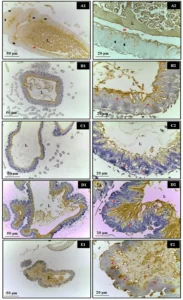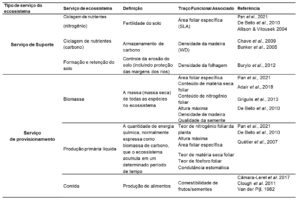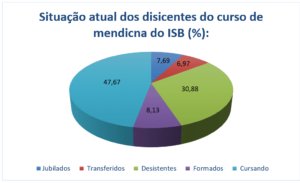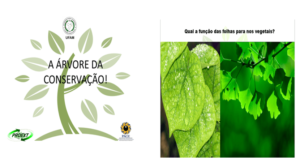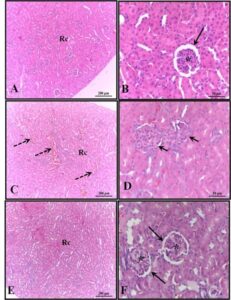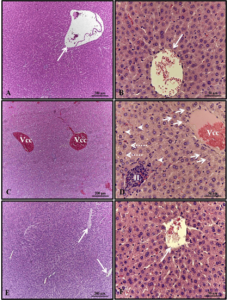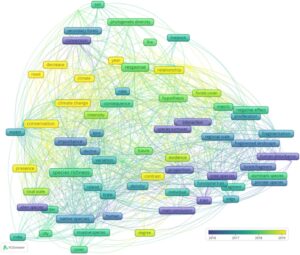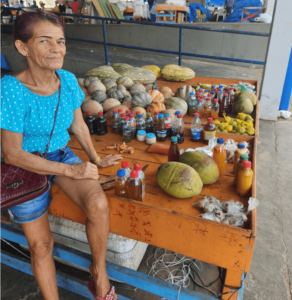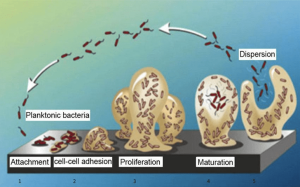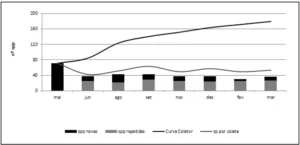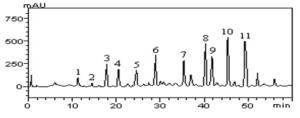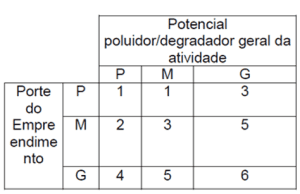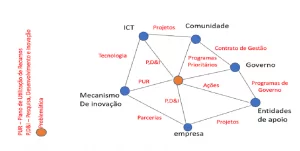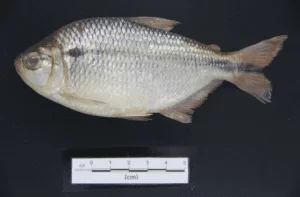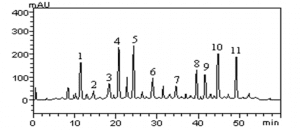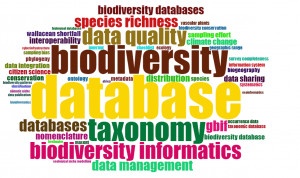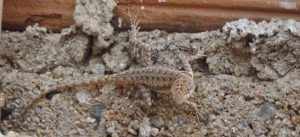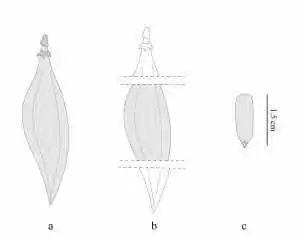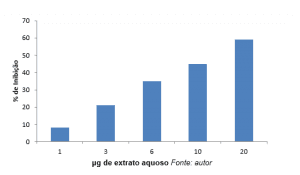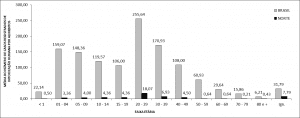REVIEW ARTICLE
NASCIMENTO, Kenikywaynne Kerowaynne Felix do [1], FERREIRA, Millena Patrício do Nascimento [2], MEDEIROS, Anna Karolyne de Araujo [3], CORDEIRO, Geovania de Souza [4], MEDEIROS, Elizabeth Sampaio de [5], IMAZAKI, Pedro Henrique Didimo [6], SOARES, Anísio Francisco [7]
NASCIMENTO, Kenikywaynne Kerowaynne Felix do. et al. Fish farming overview in brazil: welfare, productive aspects and impacts on public health. Revista Científica Multidisciplinar Núcleo do Conhecimento. Year 08, Ed. 01, Vol. 02, pp. 186-206. March 2023. ISSN:2448-0959, Access link: https://www.nucleodoconhecimento.com.br/biology/productive-aspects, DOI: 10.32749/nucleodoconhecimento.com.br/biology/productive-aspects
ABSTRACT
The objective of this study was to conduct a literature review in relation to the aquaculture landscape in Brazil. We sought to observe the productive impacts of Brazilian fish production, in addition to its impact on public health. A quantitative and documentary research was carried out in order to solve the doubts raised during the construction of the article. The findings during the research allowed to observe the technical-sanitary advances in relation to the production, well-being and quality of Brazilian fish.
Keywords: Aquaculture, Welfare, Public health.
1. INTRODUCTION
In recent years interest in fish has grown. This is due to the high nutritional value of this type of food, in addition to its association with improvements to public health. Among the benefits of including fish in the diet, the fact that it is a low-fat food (including cholesterol), high protein content and is a source of important nutritional components such as vitamins, minerals and unsaturated fatty acids. Among the benefits of eating one or two servings of fish per week are reduced risk of stroke, depression, Alzheimer’s and reduced mortality rate from cardiovascular diseases (SARTORI e AMANCIO, 2012).
According to Simon et al. (2019), Brazilian fish consumption is constantly increasing and the product price plays a relevant role in this increase, since lower prices contribute to the decision to choose fish consumption. In the northern region of Brazil, for example, due to the constant supply and attractive prices of fish, especially in riverside communities, the population tends to consume more of these products when compared to other sources of protein of animal origin (LOPES et al., 2016).
Fish farming is an efficient way to produce food, with low investment, when compared to other production systems, such as beef; in addition to having high economic return. When compared to other agribusiness sectors, fish farming has the greatest capacity to increase world food production (DE OLIVEIRA et al., 2022).
Aquaculture presents itself as the most socially and environmentally viable alternative to meet the growing demand for fish. But with increased production, one of the biggest challenges is to control diseases in crops. For this reason, it is important to adopt the biosecurity system at all levels of the aquaculture chain, which includes the implementation of good practices carried out by producers (CNA, 2017).
The adoption of good health management practices in fish farming aims to reduce the risks from which fish are susceptible. For the good development of fish and to obtain an economically viable production, it is necessary to control the environment that these animals are inserted. For example, when water quality is compromised, it causes damage to fish health, growth and reproduction (LEIRA et al., 2017). Considering the factors listed above the objective of this review is to describe the aspects related to fish farming in Brazil and the importance of adopting good practices in fish production for the promotion of well-being and prevention of diseases with impact on public health.
2. MATERIAL AND METHODS
This study describes a review of narrative and qualitative literature, whose databases used to conduct this research and selection of scientific articles were: Sciencedirect, Electronic Library Online (SciELO), PubMed and academic Google. The manual search was conducted between the months of November 2022 and January 2023, considering as inclusion criteria: articles in Portuguese, English and Spanish; works that fit the theme proposed by this research; articles available in full; articles; and, papers with corresponding title and abstract with the objective of this research. For the search of the bibliographic material to be consulted, the following keywords were used: fish farming; welfare; fish management, aquaculture production; zoonoses; unique health. The review was produced from the reading, analysis, interpretation and synthesis of information acquired from the selected works that were considered to contain relevant information for the topic addressed.
Among the exclusion criteria for the search of bibliographic material are: works whose content was not related to the theme of this study; studies whose results did not apply to the objectives of this work; publications that were not in the databases used in this work and paid articles. Old works to recent publications were explored. Therefore, the dates of publication of the papers were not taken into account, but the most recent ones were used as an information base. Regarding ethical aspects, due to the availability of data to the public domain, there was no need for submission to the Research Ethics Committee.
3. LITERATURE REVIEW
3.1 GENERAL ASPECTS OF AQUACULTURE IN BRAZIL
According De Jesus (2020) aquaculture can be defined as any animal cultivation where water is mandatory habitat in parts or in all its life and is present in all regions of Brazil due to the progress made in fish cultivation techniques and the increase in the market demand for its meat and environmental sustainability related to fish farming. Therefore fish farming is considered in Brazil an activity of great agricultural importance, generating income support for fishermen, indigenous communities and small landowners, in the same way that it is the economic basis of many low-income Brazilian families (TORRES et al., 2017). In addition, fish farming generates protein foods of high biological value, contributing to the nutrition of the local population (CAMPECHE e GUILHERME, 2019).
Aquaculture has been globally recognized as a high growth rate food production technology for several decades (GARLOCK et al., 2020). In the coming decades, the demand for products that are based on fish production tends to experience expansion as a result of socioeconomic changes and changes in dietary patterns. Allied to this factor, the production of aquatic organisms through aquaculture also has its socials importance in rural development, since it is responsible for the generation of employment and income (IGARASHI, 2021).
The strengthening of aquaculture is due to the advancement of public policies and implementation of new technologies in the agricultural industry (CARNEIRO et al., 2022). However, the habits of fish consumption were modified over the decades due to socioeconomic and cultural changes such as increased income, female emancipation and especially urbanization (PEDROZA FILHO et al., 2020). According to FAO, the Food and Agriculture Organization of the United Nations (2018), aquaculture production should reach 109.4 million tons by 2030, 37% more than in 2016, however, by 2020, total fishery and aquaculture production reached a historic record 214 million tonnes, with 178 million tonnes of aquatic fish and 36 million tonnes of algae (FAO, 2022).
Brazil is one of the countries with the most potential for aquaculture due to its natural climate conditions and its energy matrix, in addition to being a country that has a coastal extension of more than eight thousand kilometers and its territorial dimension, which has approximately 13% of the planet’s renewable fresh water (ROCHA et al., 2013). Regarding the production of farmed fish in Brazil, between 2014 and 2018 it increased by 143,760 tons, reaching 722,560 tons in 2018. In the same year, tilapia was the most cultivated species, participating in 6.67% of the global total (PEIXE BR, 2019). In addition, the extent of the country and its socioeconomic diversity justifies the diversity of its market, having more than 25 cultivated species (PEDROZA FILHO et al., 2020).
3.2 PRODUCTIVE ASPECTS OF AQUACULTURE IN BRAZIL
Although aquaculture is strongly present in the Asian continent, representing 89% of world production, production in South America has been increasing steadily (FAO, 2020). Brazil has favorable conditions for aquaculture production: ten million hectares of water depth in reservoirs of hydroelectric plants, dams and private properties, favorable climate for the growth of cultivated organisms, production of grains for the manufacture of rations, besides the diversity of species (RODRIGUES et al., 2012; OLIVEIRA et al., 2022). However, the country does not appear in a prominent position with regard to the world fish market, being in 13th place with 630 thousand tons in 2020, while China, India and Indonesia appear as a highlight, with 50, 9 and 5 million tons, respectively (FAO, 2020).
As for the most cultivated species, the outstanding productions were tilapia (323.51 thousand tons), tambaqui (101.08 thousand tons) and shrimp (54.33 thousand tons) (IBGE, 2019). Of these species, the participation in the total production value of Brazilian aquaculture in 2018 for tilapia was equivalent to 36%, followed by shrimp (22%) and tambaqui (15%) (IBGE, 2019).
According to the Municipal Livestock Survey (PPM) in 2019, the South region was highlighted in aquaculture production with a production of 180.2 thousand tons, which represented 31.1% of national production, followed by the Northeast regions (144.2 thousand tons; 24.9%), North (98.9 thousand tons; 17.1%) Southeast (92.4 thousand tons; 15.9%) and Midwest (63.8 thousand tons; 11%) (IBGE, 2019).
The Southeast region showed a strong growth in production between 2014 and 2018 (11.06%), this growth was the result of investments in fish farming, especially tilapia in the states of São Paulo and Minas Gerais, where an increase of 86 was registered, 86,4% and 104.6%, respectively, of the species cultivation (VIDAL e XIMENES, 2019).
Despite the growing production in Brazil, imports surpass exports in different segments of fish, resulting in increasing deficits in the Brazilian trade balance of the sector (SIQUEIRA, 2018). In 2018, the country imported approximately 358.29 thousand tons of fish, which corresponded to 62% of the national aquaculture production in the same year (VIDAL e XIMENES, 2019). Thus, it is possible to observe that the aquaculture sector presents itself as a market opportunity for new producers, in order to meet the demands of the domestic market, increase local production in a competitive way, replace imports or offset imports through exports (SIQUEIRA, 2018).
It is important to highlight that the per capita consumption of fish in Brazil is only 9 kg/year, a figure below that recommended by the World Health Organization (WHO), that the population should eat fish at least twice a week, being the ideal per capita consumption of 12 kg/year (SIQUEIRA, 2018). Still, the average household per capita annual consumption of fish in Brazil was 5.66 kg (IBGE, 2019), with an important disparity in average consumption between the regions of the country: North (17.70 kg per capita per year), Northeast (8.25 kg), Midwest (3.69 kg), South (3.36 kg) and Southeast (2.73 kg), respectively (IBGE, 2019).
Thus, it is important to evaluate and understand the household consumption of fish by the Brazilian population for the creation of strategies by producers and retailers, as for the creation of public policies that encourage the distribution of fish where there is little supply, and campaigns to encourage consumption and sustainable aquaculture production (WAGNER, 2023).
3.3 WELFARE FOR FISH
Fish farming is the main activity of thousands of Brazilians and currently goes through a phase of expansion and consolidation in the market. Thus, the form of management and breeding systems must undergo changes in order to improve fish production and health conditions (GOMES et al., 2020). However, with the increase in the production of techniques used in Brazil, factors that affect productivity still need to be taken into account as the forms of handling of fish, the large amount of animals for storage, the water quality and nutritional status of fish that is directly linked to chronic stress of animals and the dispersal of pathogens (TAVARES-DIAS e MARIANO, 2015).
The fish farming system requires proper conditions and planning. Before establishing a cultivation system on a site, the structure of the property and the region, the market and legislation should be analyzed (LIMA et al., 2021). Nevertheless, fish farming is often guided by the principles of maximizing production and seeking greater profits, and in many cases there is no attention to the health and welfare of the animals involved in the process (HASTEIN, 2005). Therefore, there is now a growing public and scientific awareness about the importance of understanding the stress and health of fish and aquatic animals in general, from a physiological and behavioral perspective (MARTOS-SITCHA et al., 2020).
Animal welfare, which by definition guarantees vital needs in the absence of negative experiences, is becoming increasingly important not only for terrestrial ecosystems, but also for aquatic ecosystems (JEREZ-CEPA e RUIZ-RAJABO, 2021). According to the literature, cognitive abilities were revealed in several species of fish, including the use of tools, preferences and individual personalities. In addition, many species involved in aquaculture, including fish, are now recognized as possessing behavioral and emotional capabilities consistent with widely accepted standards of ethical consideration and welfare protection (FRANKS et al., 2021).
The argument against the existence of sentience in relation to pain and suffering in aquatic animals is based on knowledge of basic concepts of neurobiology that brought the conclusion that its existence in fish and invertebrates is unlikely. Therefore, the counter-argument of this thesis comes down to the allusion that some species have physiological responses that, through functional equivalence, are similar to sensitivity and ability to experience pain and stress (BROWMAN et al., 2019).
There are several stressful factors that impact the homeostasis of fish such as oxygen levels dissolved in water and stocking density, which may be present in an intense production and may even coexist (MARTOS-SITCHA et al., 2020). Considering the fact that fish have nociception and perceive pain properly, to analyze the quality of fish meat in relation to their well-being, it is necessary to evaluate ante mortem procedures, methods of stunning and slaughter (DASKALOVA, 2019).
Well-being is also important during transportation and harvesting and stressful factors can cause impacts on meat quality in its appearance and taste (REY et al., 2019). Recent studies explore the possible indicators of well-being that consider both the biology of fish and their environmental requirements that is considered by the authors as a gap in research in welfare that should thus be built with the union of the scientific and industrial aquaculture community from an ethical perspective (RAPOSO DE MAGALHÃES et al., 2020)
3.4 MANAGEMENT CONDITIONS FOR ANIMAL WELFARE
Fish farming, as well as most zootechnical processes, employs systems that aim to produce the maximum at the lowest cost. It is of paramount importance that the production is made seeking balance between increased productivity, preservation of the aquatic environment and the promotion of the welfare of fish (ROTTA; QUEIROZ, 2003; ISHIKAWA et al., 2020). The adoption of good management practices for fish production not only promotes welfare for these animals, but also provides reduction of possible environmental impacts. Practices such as reduced stocking density, use of better quality feed (with adequate balancing of essential amino acids and greater digestibility, for example) and prevention of soil erosion in areas adjacent to production systems, can provide benefits to aquaculture farmers and create awareness of environmental self-management, where good practices ensure better environmental quality and consequently improve breeding performance, generating more profits (ROTTA; QUEIROZ, 2003).
The well-being of fish can be compromised by several factors, among which are: trauma, diseases, inadequate treatment and management. Therefore, for well-being to be correctly implemented, it must be in line with other concepts that imply, among other factors, the needs, freedoms, adaptation, control, stress, pain and health of fish (CAMINHAS, 2015).
Conte (2004) reports that stress is one of the main factors related to the occurrence of diseases and mortality in aquaculture. Stress in fish can be of numerous types, including those of a chemical nature, such as contaminants, low pH and oxygen content; and those of a physical nature, such as transport, confinement or management (OLIVEIRA; GALHARDO, 2007). As Pedrazanni et al. (2007) cite, the main critical points of fish production involve factors that are related to management, feeding, water quality, stocking density, slaughter and transport; and that, when unbalanced, can interfere with the degree of well-being.
There are strategies to improve the welfare of farmed fish that are based on compliance with recommendations for good farming practice and take into account the five freedoms and areas of well-being. Environmental enrichment is an important tool that aims to fulfill the needs of fish so that they can express natural behavior and thus increase their degree of well-being by improving the quality of life (BARCELLOS, 2022). There is growing interest in the effects of environmental enrichment on farmed fish, especially in structural enrichment. However, there are other strategies that deserve attention and that may be of interest to fish farming, such as sensory, occupational, social and food enrichment (ARECHAVALA-LOPEZ et al., 2021).
Structural enrichment consists of adding physical complexity with objects or any structural modification to increase the heterogeneity of the breeding environment. Nutritional enrichment involves the form and frequency of food supply, depending on the species of fish. Sensory enrichment can be visual, auditory and tactile and aims to reproduce the characteristics of the natural environment (BARCELLOS, 2022). Brito et al. (2015) present some types of physical enrichment application in their study with the introduction of different substrates, stones, artificial or natural plants and wood sticks. Brown et al. (2003) demonstrate the implementation of social and food enrichment through exposure of farmed fish to live prey.
As Näslund and Johnsson (2016) cite, enrichment can influence many aspects of captive fish biology such as energy expenditure, injury occurrence, stress and disease susceptibility. The addition of physical enrichment is not a solution to all problems in fish farming and the effects usually vary. But, it is used to reduce the expression of undesirable characteristics that fish develop in captivity. Furthermore, the implementation of enrichment should take into account each species and stage of life, with special attention to their natural characteristics and preferences.
Some procedures involving the physical manipulation of fish such as capture for disease control and harvesting are activities that cause acute physical and psychological stress, and are additional to chronic stressors. During the capture is common to occur the exercise of escape, in addition to the abrasion of the body of the animal against other fish, against the nets/ pukes and exposure to air. This causes the production of high concentrations of lactate, H+ ions in the muscle and cortisol, which are stress indicators and can generate diseases and cause mortality (BARNETT; PANKHURST, 1998; CONTE, 2004).
These negative effects can be mitigated by associating, for example, food with capture and transport (PEDRAZANNI et al. 2007). This procedure is called conditioning, which is a learning process and behavior modification through stimulus-response mechanisms on the central nervous system of the individual (DANTAS, s.d.). In a research conducted by Schrek et al. (1995) it was done the conditioning of juvenile salmon (Oncorhynchus tshawytscha) in order to improve the response to stress during and after transport. After the association of positive reinforcement (food) to capture and transport, it was observed that conditioned fish had a lower level of cortisol, plasma glucose and muscle lactate than unconditioned fish. Besides, unlike unconditioned fish that had a mortality rate of up to 46%, conditioned fish survived the transport, were not affected by other stressors such as low oxygen level and acquired greater resistance to infection by Aeromonas salmonicidas.
Commonly, the most common causes of stress in farmed fish are directly related to feed composition and their ability to meet nutritional requirements. For this reason, low-quality diets, which disregard the nutritional and physiological particularities species-specific, increase the possibility of occurrence of diseases and mortality in fish farming (ROTTA; QUEIROZ, 2003). To evaluate the quality of a feed, its nutritional composition, level of digestibility, and physical aspects such as color, odor, hardness, grain size, hydro stability and buoyancy should be considered (RODRIGUES et al., 2017).
Prolonged food deprivation does not have much impact on the balance of fish, but it is a determining factor for the preservation of well-being since it is important to consider the own and voluntary motivation of these animals in feeding (OLIVEIRA; GALHARDO, 2007). When there is prolonged food deprivation, the consequences generated include, for example, a decline in nutritional status from loss of macronutrients to vitamins and minerals, generate oxidative stress, cause damage to immunological function and, in extreme cases, can lead to mortality (WANG et al., 2006; CARUSO et al., 2011; NAMRATA et al., 2011; MIDWOOD et al., 2016).
Due to the intimate contact between the fish and the water in which they live, it is of paramount importance to know about the physical, chemical, and biological parameters of the water, so that the appropriate quality control is guaranteed better quality of life within the fish farming (BARCELLOS, 2022). The degree of salinity, pH, concentrations of oxygen, carbon dioxide, and nitrogen dissolved in water, luminosity, and temperature regimes are the most critical factors to the maintenance of fish homeostasis in water (OLIVEIRA; GALHARDO, 2006). To obtain good results, it is necessary to evaluate the natural characteristics of fish and consider the interaction of these factors with the available space and the social environment in which they are inserted (CONTE, 2004; PEDRAZANNI et al., 2007).
The increase in stocking density and the consequent decrease in water quality are factors that increase the risk of impaired adaptation of fish and reduction in the degree of well-being (PEDRAZANNI et al. 2007). In these conditions, social interaction is another precursor of stress, since some species have specific dominant behaviors (by food, territory, or female) creating hierarchies and assuming aggressive behavior (BARRETO, 2011).
Moreover, the lack of space for swimming is also harmful to many species. Hence, aggressive behavior can be modified by adjusting the stocking density, and the ideal amount of groups depends on the behavioral characteristics of each species, such as if they are shoaling animals or if they are territorialists. In general, too high densities cause a harmful effect (OLIVEIRA; GALHARDO, 2007).
Transportation is an important stage in fish farming that can have acute consequences and develop secondary responses to stress since there are a number of adverse stimuli ranging from capture to transport itself, the unloading and storage of fish at the destination. So the tolerance of these animals is related to their ability to resist or adapt to adverse situations (ROBERTSON et al., 1988). The physiological stress caused by factors such as handling, accumulation of carbon dioxide and ammonia in the water remains for six hours to a day and can persist up to two weeks if exposure to stressors persists or if the fish is weakened even before transport (ALVES et al., 2016).
Some methods can be used to reduce the adverse effects caused by transport. According to Grottum et al. (1997), fasting and food restriction can be adopted before transport, as they reduce oxygen consumption, ammonia excretion, and carbon dioxide by fish. This procedure improves water quality by allowing increased stocking density and transport for a longer period. Ross and Ross (1999) cite that the use of anesthetics can reduce the excitation of fish avoiding physical injury during transport, in addition to reducing oxygen consumption and excretion of ammonia and carbon dioxide. However, other authors report contradictory results for different fish species that were submitted to anesthetics diluted in transport water (CARNEIRO; URBINATI, 2001; WURTS, 1995; INOUE et al., 2010).
Benzocaine is one of the most used anesthetics in Brazilian fish farming, because it is a low-cost product and available on the market, with the characteristic of being eliminated from the muscle tissue of the fish around 24 hours after exposure (INOUE et al., 2010).
Most anesthetics used in fish are absorbed into tissues via gills. With this, any factor that affects this route, such as temperature for example, can compromise the effectiveness of the anesthetic and also the elimination of its residues. To eliminate these residues it is necessary that there is depuration (DELBON, 2006).
Vidal et al. (2008) report that there is no legislation in Brazil regulating the use of anesthetics in fish for human consumption. However, countries such as the United States of America (USA) and New Zealand have regulations regarding the use of eugenol, which indicates that there is no need for the depuration of fish after anesthesia. However, in the USA, animals anesthetized with MS-222 (tricaine methane sulfonate) and benzocaine should be cleared for 21 days; in New Zealand, MS-222 requires ten days of clearance and there is no specific period for benzocaine.
Another alternative is the addition of sodium chloride in the transport water to minimize blood ion losses by decreasing the osmotic gradient between plasma and the environment (DA SILVEIRA et al., 2009). This is what Gomes et al. (2003) performed in their research, in which for the transport of juvenile tambaqui (Colossoma macropomun) used NaCl (8g /L), at a maximum density of 150 kg/m3. The results demonstrate that the physical-chemical parameters of water quality remain with the appropriate characteristics, the response to stress is minimal and there is no mortality.
Many methods of killing fish cause severe prolonged suffering. However, from the point of view of animal welfare, any method of slaughter must adopt a procedure of insensibilization and unconsciousness before death and must last as short as possible, with the insensibilization persisting until the death of the animal (PEDRAZZANI et al., 2008). It is considered humanitarian slaughter when the insensibilization is carried out immediately, avoiding unnecessary suffering in fish, thus reducing fear and pain, which are stressors (FERREIRA et al., 2018).
Some methods of slaughter used for fish are lethal blow to the head, electric stun (shock), the section of the marrow followed by bleeding of the gills, thermal shock with the use of ice for pre-slaughter stunning, and death by asphyxiation. In general, the electric shock, the lethal blow applied to the head and the section of the bone marrow are the methods that cause less suffering, because they promote faster stunning in fish (PEDRAZZANI et al., 2008). Though, further studies related to slaughter methods are necessary, since the same method cannot be recommended for all species (FERREIRA et al., 2018).
To date, there is no Brazilian legislation related to the slaughter of fish, and the methods commonly used are considered unacceptable from the perspective of humanitarian slaughter. Like asphyxiation by exposure to air, which causes loss of consciousness in about five minutes, a time similar to bleeding. Immersion in ice, the most used method in Brazil, can take up to 20 minutes for the loss of consciousness. Thus, in terms of industry, the only methods of insensibilization with low negative impact on the well-being of fish that meet the requirement of immediate insensitivity when used properly are percussion insensibilization (not perforating or perforating) and by electric discharge (electronarcosis) (MAPA, 2022).
3.5 ROLE IN PUBLIC HEALTH
The quality and safety of food represent an increasing concern nowadays because they are directly linked to their role in public health, due to foodborne diseases. The progressive increase of legislation and regulations related to this topic demonstrates the concern related to the subject of public health (SOARES e GONÇALVES, 2012). Fish is one of the main sources of protein for human food, and with increasing consumption, is increasingly concerned about its role in public health. Because it is a type of meat that has unique intrinsic characteristics, such as pH close to neutrality, thus favoring the proliferation of microorganisms, such as Listeria monocytogenes, Salmonella spp. , Campylobacter jejuni, Yersinia enterocolitica, Escherichia coli O157:H7, Vibrio spp. , Giardia lamblia etc. (ORDÓÑEZ, 2005).
In addition to the pathogenic microorganisms that may be present in this meat, the presence of endoparasites and toxins also represents a risk to public health (GERMANO, 2008). Fish can be affected by numerous species of protozoa and parasites, either on the surface of the skin or in its internal organs (FONSECA, 2004).
The main group of fish endoparasites that concern public health are the species Anisakidae (GERMANO, 2008). Nematodes of this species parasitize the gastric system of marine mammals and larvae are observed in intermediate hosts such as salmon, herring, tuna, cod, and others (SOARES e GONÇALVES, 2012). Another limiting factor of fish quality is associated with contamination by histamine, which is produced in certain species of fish, such as tuna, horsetail, and bonito. (SOARES e GONÇALVES, 2012). Fish accumulate free histidine in their muscle fluids, which is decarboxylated by bacterial enzymes converting to histamine (GONÇALVES, 2009).
4. CONCLUSION
The growing demand for fish consumption on the world stage is undeniable. This implies greater demand for the availability of products from aquaculture.
Brazil is a country with great potential for fish production in the world, in addition to having a large maritime territory, still has a large river basin, which favors the production of freshwater and salt water fish.
Fish farming systems require planning and management conditions and adequate treatment, so that there is the maintenance of the well-being of the fish, in addition to minimizing the presence of parasites and ensuring the quality and food safety of the product.
After analyzing the contents of the reference works, it was evidenced that although there is a growth in the number of publications in the area, there is still a vast field of research that needs to be deepened.
Greater technological research is needed to analyze and minimize the impacts of Brazilian pisciculture on the environment, animal welfare, and public health.
5. ACKNOWLEDGMENTS
The authors gratefully acknowledge Fundação de Amparo à Ciência e Tecnologia do Estado de Pernambuco and Coordenação de Aperfeiçoamento de Pessoal de Nível Superior (CAPES) – Finance Code 001.
REFERENCES
ALVES, A. R.; FIGUEIREDO JÚNIOR, J. P.; SANTANA, M. H. M.; ANDRADE, M. V. M.; LIMA, J. B. A.; PINTO, L. S.; RIBEIRO, L. M. Efeito do estresse sobre a qualidade de produtos de origem animal. Pubvet, v. 10, n. 6, p. 448-512, 2016. Available in: https://www.pubvet.com.br/artigo/2882/efeito-do-estresse-sobre-a-qualidade-de-produtos-de-origem-animalnbsp#:~:text=Assim%2C%20o%20animal%20que%20apresentar,produ%C3%A7%C3%A3o%20e%20qualidade%20dos%20produtos. Access in: 26 jan. 2023.
ARECHAVALA‐LOPEZ, P.; CABRERA‐ÁLVAREZ, M. J.; MAIA, C. M.; SARAIVA, J. L. Environmental enrichment in fish aquaculture: A review of fundamental and practical aspects. Reviews in Aquaculture, Faro – Portgal, v. 14, n. 2, p. 704-728, 2021. Available in: https://onlinelibrary.wiley.com/doi/abs/10.1111/raq.12620. Access in: 6 dez. 2022.
BARCELLOS, L. J. G. Manual de boas práticas na criação de peixes de cultivo, 1ª ed. Brasília: MAPA/SDI, 2022, 171p. Available in: https://www.defesa.agricultura.sp.gov.br/educacao-sanitaria/. Access in: 30 nov. 2022.
BARNETT, C. W.; PANKHURST, N. W. The effects of common laboratory and husbandry practices on the stress response of greenback flounder Rhombosolea tapirina (Günther, 1862). Aquaculture, Tasmânia – Austrália, v. 162, n. 3-4, p. 313-329, 1998. Available in: https://www.sciencedirect.com/science/article/abs/pii/S0044848698002026. Access in: 6 dez. 2022.
BARRETO, T. N. Efeito da homogeneidade de tamanho sobre o comportamento agressivo e o estresse social na tilápia-do-Nilo (Oreochromis niloticus), linhagem tailandesa. 2011. 36 p. Dissertação (mestrado) – Universidade Estadual Paulista, Instituto de Biociências, Letras e Ciências Exatas, São Paulo, 2011.
BRITO, J. M.; FERREIRA, A. H. C.; SANTANA JÚNIOR, H. A.; NASCIMENTO, A. dos S.; FREITAS, L. de O.; SANTOS, D. H. L; SILVA, B. R.; BATISTA, J. M. M.; SANTOS, G. L.; OLIVEIRA, L. T. S. Enriquecimento ambiental na piscicultura. Nutritime Revista Eletrônica, v. 12, n. 5, p. 4260-4267, 2015. Available in: http://www.nutritime.com.br. Access in: 7 dez. 2022.
BROWN, C.; DAVIDSON, T.; LALAND, K. Environmental enrichment and prior experience of live prey improve foraging behaviour in hatchery-reared Atlantic salmon. Journal of Fish Biology, Madingley – UK, v. 63, n. 1, p. 187-196, 2003. Available in: https://onlinelibrary.wiley.com/doi/abs/10.1111/j.1095-8649.2003.00208.x. Access in: 6 dez. 2022.
BROWMAN, H. I.; COOKE, S. J.; COWX, I. G.; DERBYSHIRE, S. W.; KASUMYAN, A.; KEY, B.; ARLINGHAUS, R. Welfare of aquatic animals: where things are, where they are going, and what it means for research, aquaculture, recreational angling, and commercial fishing. ICES Journal of Marine Science, vol. 76, n. 1, pp. 82-92, 2019.
CAMINHAS, A. M. T. A prática do pesque-e-solte sob a perspectiva dos estudos de bem-estar de peixes: perspectivas de um debate ético científico. Revista Panorâmica On-line, Barra do Garças – MT, v. 19, p.10-22, 2015. Available in: https://periodicoscientificos.ufmt.br/revistapanoramica/index.php/revistapanoramica/article/view/632. Access in: 5 dez. 2022.
CAMPECHE, D. F. B.; GUILHERME, L. C. Piscicultura na agricultura familiar. Agricultura familiar, pp. 363, 2019.
CARUSO, G.; DENARO, M. G.; CARUSO, R.; MANCARI, F.; GENOVESE, L.; MARICCHIOLO, G. Response to short term starvation of growth, haematological, biochemical and non-specific immune parameters in European sea bass (Dicentrarchus labrax) and blackspot sea bream (Pagellus bogaraveo). Marine environmental research, v. 72, n. 1-2, p. 46-52, 2011. Available in: https://www.sciencedirect.com/science/article/abs/pii/S0141113611000481. Access in: 7 dez. 2022.
CARNEIRO, P. C. F.; URBINATI, E. C. Electrolyte disturbance in matrinxã Brycon cephalus following transport stress under benzocaine effect. Journal of Applied Aquaculture, v. 11, n. 4, p. 1-13, 2001. Available in: http://dx.doi.org/10.1300/J028v11n04_01. Access in: 7 dez. 2022.
CARNEIRO, C. J.; BRUM, A. L.; THESING, N. J.; PROCHNOW, D. A. Cadeia produtiva da piscicultura: um olhar para a evolução da tilapicultura no Brasil. Revista Perspectiva, vol. 46, n. 175, pp. 25-34, 2022.
CONTE, F. S. Stress and the welfare of cultured fish. Applied Animal Behaviour Science, v. 86, n. 3-4, p. 205-223, 2004. Available in: https://www.sciencedirect.com/science/article/abs/pii/S0168159104000486. Access in: 6 dez. 2022.
CNA. Segurança sanitária na piscicultura brasileira. Manual Técnico. Brasil: CNA, 2019.
DANTAS, T. “Condicionamento”; Brasil Escola, s.d. Available in: https://brasilescola.uol.com.br/psicologia/condicionamento.htm. Access in: 19 de janeiro de 2023.
DA SILVEIRA, U. S.; LOGATO, P. V. R.; PONTES, E. da C. Fatores estressantes de peixes. Revista Eletrônica Nutritime, v. 6, n. 4, p. 1001-1017, 2009. Available in: http://nutritime.com.br. Access in: 20 jan. 2023.
DASKALOVA, A. Farmed fish welfare: stress, post-mortem muscle metabolism, and stress-related meat quality changes. International aquatic research, vol. 11, n. 2, pp. 113-124, 2019.
DELBON, M. C. Ação da Benzocaína e do Óleo de Cravo sobre parâmetros fisiológicos de tilápia, Oreochromis niloticus. 2006. 91p. Dissertação (mestrado) – Universidade Estadual Paulista “Júlio de Mesquita Filho”, UNESP, Jaboticabal, São Paulo, 2006.
DE OLIVEIRA, M. A.; SILVA FILHO, A. S. S.; ANDRADE, S. P.; DE OLIVEIRA, W. C. M.; DE CASTRO, W. J. R.; FERRAZ, A. P. F.; SEMIM, C. S.; SERANTE, S. C.; FERREIRA, C. M.; DE ARAÚJO, F. E. Gestão do Agronegócio Pesqueiro: Importância do setor para o Brasil. Research, Society and Development, v. 11, n. 7, p. e39511729974-e39511729974, 2022. Available in: https://rsdjournal.org/index.php/rsd/article/view/29974. Access in: 6 dez. 2022.
FOOD AND AGRICULTURE ORGANIZATION – FAO. The state of world fisheries and aquaculture. Roma, 2022. Available in: https://www.fao.org/3/cc0461en/online/sofia/2022/world-fisheries-aquaculture.html. Access in: 6 dez. 2022.
FERREIRA, N. A.; DE ARAÚJO, R. V.; CAMPOS, E. C. Boas práticas no pré-abate e abate de pescado. Pubvet, v. 12, n. 7, p. 1-14, 2018. Available in: https://www.pubvet.com.br/artigo/4902/boas-praacuteticas-no-preacute-abate-e-abate-de-pescado#:~:text=Dentre%20as%20pr%C3%A1ticas%20que%20s%C3%A3o,s%C3%A3o%20por%20asfixia%20(em%20ar. Access in: 6 dez. 2022.
FONSECA, M. G.; SILVA, R. J. Occurrence of Rondonia rondoni Travassos (Nematoda: Atractidae) in the pacu, Piaractus mesopotamicus Holgerg (Osteichthyes: Characidae) celomatic cavity. Reunião Anual do Instituto Biológico, São Paulo, 2004.
GARLOCK, T.; ASCHE, F.; ANDERSON, J.; BJØRNDAL, T.; KUMAR, G.; LORENZEN, K.; TVETERÅS, R. A global blue revolution: aquaculture growth across regions, species, and countries. Reviews in Fisheries Science & Aquaculture, vol. 28, n. 1, pp. 107-116, 2020.
GERMANO, P. M. L; GERMANO, M. I. S. Higiene e vigilância sanitária de alimentos. 3ª ed. São Paulo: Manole, 2008.
GOMES, L. C.; ARAUJO-LIMA, C. A. R. M.; ROUBACH, R.; URBINATI, E. C. Avaliação dos efeitos da adição de sal e da densidade no transporte de tambaqui. Pesquisa agropecuária brasileira, Brasília, v. 38, n. 2, p. 283-290, 2003. Available in: https://www.scielo.br/j/pab/a/WdCWDv8qJG8kjG4s8xW7jQM/?lang=pt#:~:text=cortisol%3B%20fish%20culture-,Avalia%C3%A7%C3%A3o%20dos%20efeitos%20da%20adi%C3%A7%C3%A3o%20de%20sal%20e,no%20transporte%20de%20tambaqui%201&text=RESUMO-,Os%20objetivos%20deste%20trabalho%20foram%20testar%20a%20efici%C3%AAncia%20do%20sal,em%20caixas%20de%20pl%C3%A1stico%20adaptadas. Access in: 7 dez. 2022.
GOMES, I. D. O. G.; SILVA, Á. P. C.; GOMES, J. B.; SILVA, M. C. S.; DE SOUZA SERRA, I. M. R. Percepção da sanidade em pisciculturas da baixada Ocidental Maranhense, Brasil. Brazilian Journal of Development, vol. 6, n. 5, pp. 23029-23043, 2020.
GRØTTUM, J. A.; STAURNES, M.; SIGHOLT, T. Effect of oxygenation, aeration and pH control on water quality and survival of turbot, Scophthalmus maximus (L.), kept at high densities during transport. Aquaculture Research, v. 28, n. 2, p. 159-164, 1997. Available in: https://onlinelibrary.wiley.com/doi/abs/10.1046/j.1365-2109.1997.00842.x. Access in: 6 dez. 2022.
HASTEIN, T.; SCARFE, A. D.; LUND, V. L. Science-based assessment of welfare: aquatic animals. Revue Scientifique et Technique-Office International des Epizooties, vol. 24, n. 2, pp. 529, 2005.
IGARASHI, M. A. Aspectos do potencial econômico da piscicultura, contribuição e perspectivas da atividade para o desenvolvimento sustentável no Brasil. Revista Unimar Ciências, v. 28, n. 1-2, 2021.
INOUE, L. A. K. A.; HACKBARTH, A.; MORAES, G. Benzocaína sobre respostas ao estresse do matrinxã submetido ao transporte em sacos plásticos. Revista Brasileira Saúde e Produção Animal, v. 11, n. 3, p. 909-918, 2010. Available in: https://www.bvs-vet.org.br/vetindex/periodicos/revista-brasileira-de-saude-e-producao-animal/11-(2010)-3/benzocaina-sobre-respostas-ao-estresse-do-matrinxa-submetido-ao-transp/. Access in: 6 dez. 2022.
INSTITUTO BRASILEIRO DE GEOGRAFIA E ESTATÍSTICA – IBGE. Pesquisa de Orçamentos Familiares – POF 2017-2018. Rio de Janeiro, 2019.
INSTITUTO BRASILEIRO DE GEOGRAFIA E ESTATÍSTICA – IBGE. Pesquisa Pecuária Municipal. Rio de Janeiro: IBGE, 2019. vol. 47.
ISHIKAWA, M. M.; QUEIROZ, J. F. de; NASCIMENTO, J. L. do; PÁDUA, S. B.; MARTINS, M. L. Uso de biomarcadores em peixe e boas práticas de manejo sanitário para a piscicultura, 1ª edição. Jaguariúna: Embrapa Meio Ambiente – Documentos (INFOTECA-E), 2020, 28 p. Available in: https://www.embrapa.br/busca-de-publicacoes/-/publicacao/1127526/uso-de-biomarcadores-em-peixe-e-boas-praticas-de-manejo-sanitario-para-a-piscicultura#:~:text=Os%20biomarcadores%20em%20peixe%20para,para%20a%20qualidade%20do%20pescado. Access in: 6 dez. 2022.
LEIRA, M. H.; CUNHA, L. T. da; BRAZ, M. S.; MELO, C. M. V.; BOTELHO, H. A.; REGHIM, L. S. Qualidade da água e seu uso em pisciculturas. Pubvet, v. 11, n. 1, p. 11-17, 2017. Available in: https://www.pubvet.com.br/artigo/3588/qualidade-da-aacutegua-e-seu-uso-em-pisciculturas. Access in: 6 dez. 2022.
LIMA, C. A. S.; BUSSONS, M. R. F. M.; ARIDE, P. H. R.; OLIVEIRA, A. T.; O’SULLIVAN, F. L. A.; PANTOJA-LIMA, J. Análise socioeconômica e lucratividade da piscicultura do tambaqui (Colossoma macropomum) no estado do Amazonas, Brasil. Aquicultura na Amazônia: estudos técnicocientíficos e difusão de tecnologias. Atena, Ponta Grossa, pp. 86-102, 2021.
LOPES, I. G.; DE OLIVEIRA, R. G.; RAMOS, F. M. Perfil do consumo de peixes pela população brasileira. Biota Amazônia (Biote Amazonie, Biota Amazonia, Amazonian Biota), v. 6, n. 2, p. 62-65, 2016. Available in: https://www.researchgate.net/publication/304659808_Perfil_do_Consumo_de_Peixes_pela_Populacao_Brasileira. Access in: 12 jan. 2023.
MINISTÉRIO DA AGRICULTURA, PECUÁRIA E ABASTECIMENTO – MAPA. Manual de abate humanitário de peixes, 1ª edição. Brasília: Biblioteca Nacional de Agricultura – BINAGRI, 2022, 55p. Available in: https://www.defesa.agricultura.sp.gov.br/. Access in: 12 jan. 2023.
MARTOS-SITCHA, J. A.; MANCERA, J. M.; PRUNET, P.; MAGNONI, L. J. Welfare and stressors in fish: Challenges facing aquaculture. Frontiers in Physiology, vol. 11, pp. 162, 2020.
MIDWOOD, J. D.; LARSEN, M. H.; AARESTRUP, K.; COOKE, S. J. Stress and food deprivation: linking physiological state to migration success in a teleost fish. Journal of Experimental Biology, v. 219, n. 23, p. 3712-3718, 2016. Available in: https://pubmed.ncbi.nlm.nih.gov/27618858/. Access in: 7 dez. 2022.
NAMRATA, S.; SANJAY, N.; PALLAVI, C. Effect of starvation on the biochemical composition of freshwater fish Channa punctatus. Recent Research in Science and Technology, v. 3, n. 9, p. 17-19, 2011. Available in: https://updatepublishing.com/journal/index.php/rrst/article/view/775. Access in: 6 dez. 2022.
NÄSLUND, J.; JOHNSSON, J I. Environmental enrichment for fish in captive environments: effects of physical structures and substrates. Fish and Fisheries, v. 17, n. 1, p. 1-30, 2016. Available in: https://onlinelibrary.wiley.com/doi/abs/10.1111/faf.12088. Access in: 6 dez. 2022.
OLIVEIRA, L. C. C.; DA SILVA, A. D. C.; JUNIOR, A. D. S. P.; DA SILVEIRA, B. G.; SILVA, C. H.; BRABO, M. F. Aspectos produtivos e econômicos da piscicultura no Arquipélago do Marajó, Pará, Brasil. Research, Society and Development, vol. 11, n. 8, pp. e45411830866-e45411830866, 2022.
OLIVEIRA, R. F.; GALHARDO, L. Sobre a aplicação do conceito de bem-estar a peixes teleósteos e implicações para a piscicultura. Revista Brasileira de Zootecnia, v. 36, pp. 77-86, 2007. Available in: https://www.scielo.br/j/rbz/a/fRwxqz4XPg8sryvZV66JRBS/?lang=pt. Access in: 7 dez. 2022.
ORDÓÑEZ, J. A. Tecnologia de alimentos de origem animal. v. 2. São Paulo: Artmed, 2005.
ORGANIZAÇÃO DAS NAÇÕES UNIDAS PARA A ALIMENTAÇÃO E A AGRICULTURA – FAO. The State of World Fisheries and Aquaculture 2020. Sustainability in action. Rome, 2020.
PEDRAZZANI, A. S.; NETO, A. O.; CARNEIRO, P. C. F.; GAYER, M. V.; MOLENTO, C. F. M. Opinião pública e educação sobre abate humanitário de peixes no município de Araucária, Paraná. Ciência Animal Brasileira, Goiânia, v. 9, n. 4, p. 976-996, 2008. Available in: https://revistas.ufg.br/vet/article/view/1361. Access in: 7 dez. 2022.
PEDROZA FILHO, M. X.; FLORES, R. M. V.; ROCHA, H. S.; DA SILVA, H. J. T.; SONODA, D. Y.; DE CARVALHO, V. B.; RODRIGUES, F. L. M. O mercado de peixes da piscicultura no Brasil: estudo do segmento de supermercados. Brazilian Agricultural Research Corporation (Embrapa), 2020.
RAPOSO DE MAGALHÃES, C. S. F.; CERQUEIRA, M. A. C.; SCHRAMA, D.; MOREIRA, M. J. V.; BOONANUNTANASARN, S.; RODRIGUES, P. M. L. A Proteomics and other Omics approach in the context of farmed fish welfare and biomarker discovery. Reviews in Aquaculture, vol. 12, n. 1, pp. 122-144, 2020.
REY, S.; LITTLE, D.; ELLIS, M. Farmed fish welfare practices: salmon farming as a case study, 1998.
ROBERTSON, L.; THOMAS, P.; ARNOLD, C. R. Plasma cortisol and secondary stress responses of cultured red drum (Sciaenops ocellatus) to several transportation procedures. Aquaculture, v. 68, n. 2, p. 115-130, 1988. Available in: https://www.sciencedirect.com/science/article/abs/pii/0044848688902359. Access in: 6 dez. 2022.
ROCHA, C. M. C. D.; RESENDE, E. K. D.; ROUTLEDGE, E. A. B.; LUNDSTEDT, L. M. Avanços na pesquisa e no desenvolvimento da aquicultura brasileira. Pesquisa agropecuária brasileira, n. 48, pp. iv-vi, 2013.
RODRIGUES, L. S.; CAVALCANTI, I. M.; CAPANEMA, L. X. D. L.; MORCH, R. B.; MAGALHÃES, G.; LIMA, J. F.; MUNGIOLI, R. P. Panorama da aquicultura no Brasil: desafios e oportunidades. BNDES Setorial, n. 35, p. 421-463, 2012.
RODRIGUES, A. P. O.; FREITAS, L. E. L.; SANTOS, V. R. V.; MORO, G. V.; HONDA, R. T.; ARAUJO, P. L. D.; BICUDO, A. J. A. Qualidade de rações comerciais utilizadas na alimentação do pirarucu Arapaimas gigas em cativeiro, 1ª edição. Palmas, TO: Embrapa Pesca e Aquicultura, 2017, 28p. Available in: https://www.embrapa.br/busca-de-publicacoes/-/publicacao/1081636/qualidade-de-racoes-comerciais-utilizadas-na-alimentacao-do-pirarucu-arapaima-gigas-em-cativeiro. Access in: 6 dez. 2022.
ROSS, L. G.; ROSS, B. Anaesthethic and sedative techniques for aquatic animals, 5ª edição. Oxford: Blackwell Science, 1999, 222p. Available in: https://onlinelibrary.wiley.com/doi/book/10.1002/9781444302264. Access in: 11 dez. 2022.
ROTTA, M. A.; DE QUEIROZ, J. F. Boas práticas de manejo (BPMs) para a produção de peixes em tanques-redes, 1ª edição. Corumbá, MS: Embrapa Pantanal, 2003, 27p. Available in: https://www.embrapa.br/busca-de-publicacoes/-/publicacao/798993/boas-praticas-de-manejo-bpms-para-a-producao-de-peixes-em-tanques-redes. Access in: 30 nov. 2022.
SARTORI, A. G. O.; AMANCIO, R. D. Pescado: importância nutricional e consumo no Brasil. Segurança alimentar e nutricional, v. 19, n. 2, p. 83-93, 2012. Available in: https://periodicos.sbu.unicamp.br/ojs/index.php/san/article/view/8634613#:~:text=O%20pescado%20%C3%A9%20um%20alimento,)%20e%20docosaexaenoico%20(DHA). Access in: 12 jan. 2023.
SCHRECK, C. B.; JONSSON, L.; FEIST, G.; RENO, P. Conditioning improves performance of juvenile Chinook salmon, Oncorhynchus tshawytscha, to transportation stress. Aquaculture, v.135, p.99-110, 1995. Available in: https://www.sciencedirect.com/science/article/abs/pii/0044848695010181. Access in: 7 dez. 2022.
SIMON, K. F.; FERREIRA, A. M.; NISHIYAMA, M. F.; ARTUSO, E. Será que a população consome a quantidade de peixe recomendada pela FAO. Rev. Simbio-Logias, v. 11, n. 15, p. 51-61, 2019. Available in: https://www.ibb.unesp.br. Access in: 7 dez. 2022.
SIQUEIRA, T. V. Aquicultura: a nova fronteira para produção de alimentos de forma sustentável. Revista BNDES, vol. 25, n. 49, pp. 119-170, 2018.
SOARES, K. M. P.; GONÇALVES, A. A. Qualidade e segurança do pescado. Revista do Instituto Adolfo Lutz, vol. 71, n. 1, pp. 1-10, 2012.
TAVARES-DIAS, M.; MARIANO, W. S. Aquicultura no Brasil: novas perspectivas. Vol. 2. São Carlos: Pedro & João. Editores, São Carlos, Brasil, 2015.
TORRES, S.; PEREIRA, F. D. A. R.; SOUZA, C. C.; FERREIRA, M. B. Análise da eficiência da produção da piscicultura na região de Dourados-MS. Revista Espacios, vol. 38, n. 52, pp. 26, 2017.
VIDAL, L. V. O.; ALBINATI, R. C. B.; ALBINATI, A. C. L.; LIRA, A. D.; ALMEIDA, T. R.; SANTOS, G. B. Eugenol como anestésico para a tilápia-do-nilo. Pesquisa Agropecuária Brasileira, v. 43, n. 8, p.1069-1074, 2008. Available in: https://www.scielo.br/j/pab/a/76vZrVSMGX47BzphN7zfnLj/?lang=pt. Access in: 7 dez. 2022.
VIDAL, M. D. F.; XIMENES, L. F. Produção de pescados na área de atuação do BNB. Caderno Setorial ETENE, vol. 4, n. 91, 2019.
WANG, T.; HUNG, C. Y.; RANDALL, D. J. The comparative physiology of food deprivation: from feast to famine. Annu. Rev. Physiol., vol. 68, pp 223-251, 2006. Available in: https://pubmed.ncbi.nlm.nih.gov/16460272/. Access in: 6 dez. 2022.
WAGNER, Y. G.; COELHO, A. B.; TRAVASSOS, G. F. Análise do consumo domiciliar de pescados no Brasil utilizando dados da POF 2017-2018. Revista de Economia e Sociologia Rural, vol. 61, n. 3, p. e250494, 2023.
WURTS, W. A. Using salt to reduce handling stress in channel catfish. World Aquaculture, v. 26, n. 3, p 80-81, 1995. Available in: https://www.researchgate.net/publication/283360302_Using_salt_to_reduce_handling_stress_in_channel_catfish. Access in: 6 dez. 2022.
[1] Master’s student in the Graduate Program in Animal Bioscience. ORCID: 0000-0003-4115-7832. LATTES CURRICULUM: http://lattes.cnpq.br/9042705277810015.
[2] Master’s student in the Graduate Program in Animal Bioscience. ORCID: 0000-0001-5227-9363. LATTES CURRICULUM: http://lattes.cnpq.br/1713734083159044.
[3] Graduating in Veterinary Medicine. ORCID: 0000-0001-9273-5204. LATTES CURRICULUM: http://lattes.cnpq.br/8329028352662293.
[4] Graduating in Veterinary Medicine. ORCID: 0000-0001-5584-9464. LATTES CURRICULUM: http://lattes.cnpq.br/1495170820726310.
[5] Doctor of the Graduate Program in Animal Bioscience. ORCID: 0000-0002-1289-2902. LATTES CURRICULUM: http://lattes.cnpq.br/5998863169551704.
[6] Doctor in Veterinary Sciences. ORCID: 0000-0002-1993-0350. LATTES CURRICULUM: http://lattes.cnpq.br/2178390141933805.
[7] PhD in Biochemistry and Physiology, Master in Physiology, Biologist. ORCID: https://orcid.org/0000-0003-1493-7964. LATTES CURRICULUM: http://lattes.cnpq.br/9044747136928972.
Sent: 16 of February, 2023.
Approved: 07 of March, 2023.

